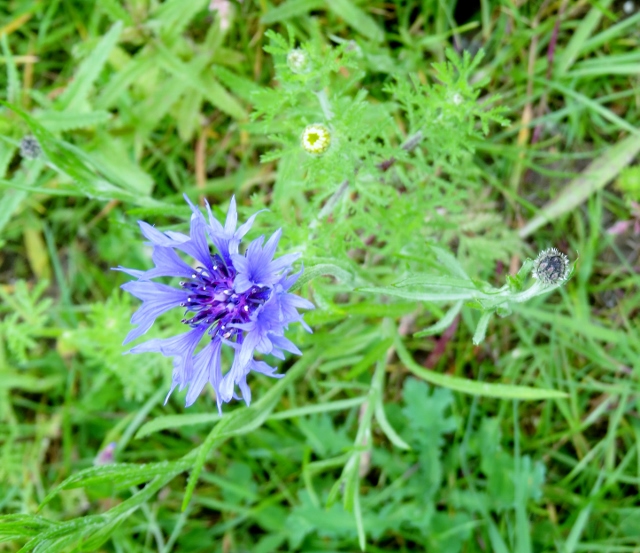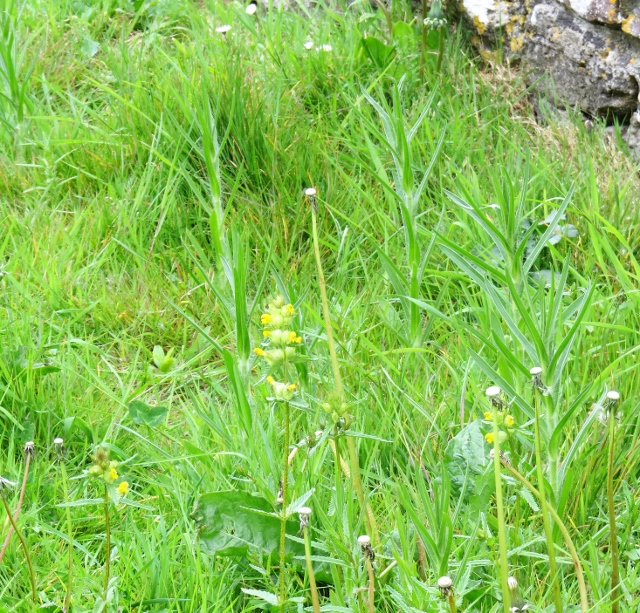

Morton Bridge wildflower meadow gets its name from its location right next to Morton Bridge, which is just past the Anchor Inn as you drive out of Thornbury on the B4061 Gloucester Road. The meadow is situated between the Community Orchard and the old Gloucester Road. As the land owners South Gloucestershire Council are fully committed and supportive of our project. Another key stake holder is the charity Bug Life who funded the seeding of the meadow and other activities from a nationwide initiative to help vital pollinators spread and flourish known as B lines. We are in the process of registering our Meadow on the arm of the B-lines map which passes through Thornbury on its way out to the Severn near Oldbury.
The Meadow which previously was mown
regularly by the council, who left the grass cuttings in situ, was left
to grow longer in 2016 by agreement with all parties. Our group
delivered leaflets to inform local residents of our plans and that the
area would look different. Part of the preparation was to cut and
remove this grass to the far edge of the field in September which we
achieved by holding a scything course in the meadow. In early November,
somewhat later than originally planned, the final preparation
and seeding was completed.
If you are travelling from outside
Thornbury the location of the meadow is found on the OS map 162 at grid
reference ST 645 911. The nearest post code is BS35 1LT.
We intend to add more detail later to
tell the story of how the Meadow came about and was created. There will
also be a page on the history of the site back into the 1800s. So
please do keep coming back for the latest news and extra information.
The first flowers in the Morton Bridge Wildflower Meadow have burst open this first week in May. The meadow was seeded with Emorsgate EM3 wildflower mix, a nurse of cornfield annuals EC1 and a heavy additional sowing of yellow rattle as part of our strategy to reduce the amount of grass to be cut each year. Please click on the Emorsgate link above to learn about each mix.

Photo by John MIlls rights reserved
The first flower to bloom in the meadow is a Cornflower, one of the Cornfield annuals as expected. These annuals should give a good show for the meadow's first year and gradually the wildflower mix will take over among other plants which will grow from wild seeding.

Picture by John Mills all rights reserved
Yellow Rattle pictured above is
also flowering in the meadow. The extra sowing of yellow rattle seed is
paying dividends as it is widespread throughout the meadow. It is
parasitic on the various grasses which means there should be less grass
to cut and more opportunity for other species to shine. It grows in
cycles of approximately three years and then leaves gaps which other
plants colonise. Who knows one day we may even see orchids growing in
the Morton Bridge Wildflower Meadow.
Closely mown grass only supports a very limited amount of flowering species and other wildlife. When you cut grass and leave the cuttings in situ it produces a very rich soil. In order to create a wildflower meadow you need a poorer soil which then encourages more biodiversity.
A wildflower meadow supports a wider range of wild flowers, and those flowers provide nectar for bees and other insects. The longer grass gives cover and food for invertebrates, reptiles and small mammals, who feed on the invertebrates.
During the Scything course we were continually stopping to rescue frogs which were living in the meadow. If the grass had been shorter they would not have been there and if the grass had been cut mechanically they would not have been saved.
There is a National Pollinator Strategy, such is the concern that if we do not all play our part in facilitating change the current decline in numbers of bees and other pollinators will put our food chain and the lives of future generations at risk.